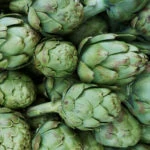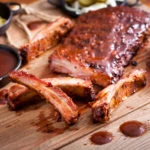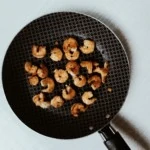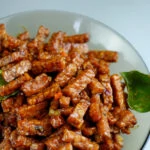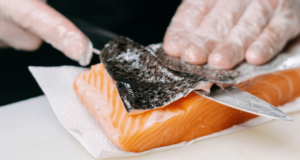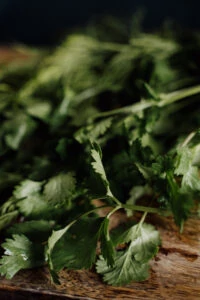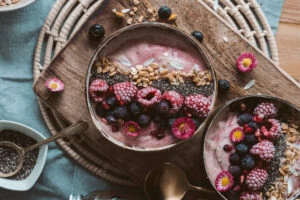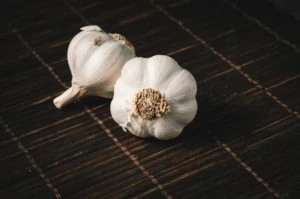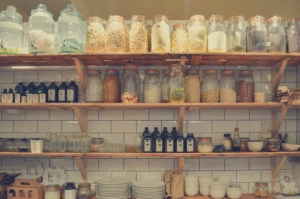I originally thought allspice was a combination of all the spices, but I was wrong! After a bit of research, I learned so much about this interesting spice.
What is Allspice?
Allspice is a many-in-one spice and one of the top-recommended spices to have in your spice cabinet. I’ve researched what it is, how to use it both for Jamaican jerk seasoning and holiday baking. Now this spice has moved to the front of my cupboard.
What are the Ingredients in Allspice?
How many spices are in allspice? That’s a trick question! Allspice is a single-ingredient spice. The number of spices in allspice is one, most commonly known as the Jamaica pepper berry.
Allspice is a relative of clove that goes by other names including Jamaica pepper, pimenta, pimento, or myrtle pepper. Allspice is the dried form of the unripe berry that grows in bunches on the Pimenta dioica tree, a small, 60-foot evergreen in the myrtle family that is native to southern Mexico, Central America, and the Greater Antilles.
Allspice is made from the dried peppercorn-like seed found inside the green, unripe Jamaica pepper berry. Sometimes it is ground before being sold as allspice.
Other terms for allspice, like “pimento,” can be confused with red pimientos often accompanying martinis or used to stuff green olives — but they are not related.
Can you Buy Fresh Allspice?
Unground spices retain more aroma, flavor, and quality, and the same goes for whole allspice vs. ground allspice.
But what about fresh, undried allspice berries? The fresh, undried form of the Jamaica pepper is not typically available in stores. Since the allspice tree adapts well to a container, it makes a great patio houseplant. You could grow your own allspice!
What Does Allspice Taste Like?
Allspice tastes like a combination of cinnamon, nutmeg, and clove, and has warm floral notes with a light peppery bite. Allspice does not typically rate as spicy-hot according to the Scoville heat unit (SHU) scale.
Can I Make My Own Allspice?
If you’re up for starting at the roots, you can make your own allspice by harvesting from and even growing your own Pimenta dioica tree at home.
The Pimenta dioica tree, where allspice comes from, is easy to grow at home because it requires moderate conditions found in many places around the world. Male and female saplings should be planted together to encourage cross-pollination. Leave enough room for their roots and canopies to extend at least 40 to 50 feet. Plant in loose, well-moistened soil and where the trees will receive sunlight 40 percent of the day. The Pimenta dioica tree will grow to 40 or 50 feet tall.
Harvest the Jamaica pepper berry before it ripens to its purple color and loses its allspice aroma. First fruits can be harvested five to six years after planting. The green Jamaica pepper is fermented lightly and sun or machine dried. Its fleshy, green berry decomposes, leaving a dried, reddish-brown peppercorn-like seed, which we call allspice.
Where Can I Buy Allspice?
Ground allspice can be found in most grocery stores. It looks like a brown powder and usually comes in a small jar. Whole allspice can often be found in the spice isle or in the canning section of most grocery stores.
If you are looking for options that are available online, you can find both whole allspice and ground allspice.
How to Store
Whole allspice holds is potency for one to two years. Store it in an air-tight glass container in a dark, cool place. Your kitchen cabinet works just fine.
Ground allspice holds its potency for several months after grinding, though a portion of its potency is lost within a few weeks after grinding. To preserve as much freshness as possible, store in an airtight container in a kitchen cupboard.
What is a Substitute for Allspice?
If you’re in a pinch, you can turn to allspice’s three best friends as allspice replacements.
Substitute 1 teaspoon of allspice by combining the following:
- a pinch of ground nutmeg
- 1/2 teaspoon ground cinnamon
- 1/2 teaspoon ground cloves
Best Ways to Cook with Allspice
Allspice is used in many cuisines, including Jamaican, as in Jamaican jerk seasoning; Middle Eastern cuisine, like shawarma. There are several examples of Western recipes such as Pumpkin bread, banana bread and pies, and limitless soups, rice pilaf, cranberry sauce, seasoning up an easy home-roasted chestnut snack like this recipe for How to Roast Chestnuts the Right Way and spiced hot drinks. There are many other recipes on kitchen ratings that use this fantastic spice, try searching!
Whatever the cuisine, allspice is the magical, floral warmth that ties together flavors and brings people together to enjoy them around the world.
In general, when cooking with allspice, remember that its flavor grows as it is heated, and can become overpowering quickly. Use it in small quantities. A general rule for a recipe made for four people is no more than 1 teaspoon of allspice.
Flavor Pairings with Allspice
Allspice pairs best in sweet or savory dishes that include other warming spices like cinnamon, cloves, ginger, and cumin. When cooking with allspice, think flavors that are best savored on cold days: winter squash, sweet potatoes and other root vegetables, spice cake and other heavy pastries, pork, ground beef, and recipes for stews and other heavy, hot meals or beverages.

